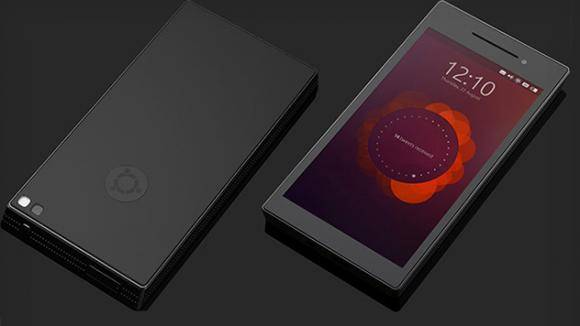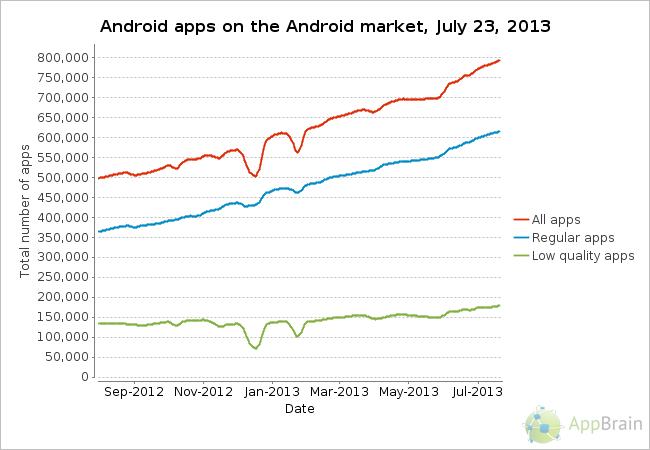
So you’ve got $830 burning a hole in your wallet, and you really want a hybrid smartphone/desktop device. You know, a smartphone running Android that also dual-boots into a full-blown desktop operating system. You won’t actually see the device until May 2014, but you must pay for it today. Sound risky? Not to worry: if the project doesn’t get $32 million in funding within the next 30 days, you’ll get your money back. Got that? You in?
Oddly enough, you just might be. That is, if you’re an Ubuntu enthusiast and are tracking the new Ubuntu Edge, which has already garnered $3.7 million in crowdsourced funding.
Routing Around The Innovation Gap
[Disclosure: Matt Asay is the former COO of Canonical, and is currently the VP, Business Development & Corporate Strategy at 10gen.]
Canonical, the company behind Ubuntu, hopes, however, that this funding campaign will help to birth a device that appeals to an audience far bigger than the Ubuntu desktop community, as ReadWrite‘s Dan Rowinski reports. Mark Shuttleworth, Canonical’s founder and chairman, explains:
The pressure to produce high volume hits damages the ability to produce leading edge innovation. If you’re hoping to produce up to 50 million of some device then you have a demonstrable disincentive to produce anything that hasn’t been made already. There’s what we think is an opportunity to connect with early adopters and enthusiasts.
In other words, the best technology innovations may be held back by lack of an immediate market for the devices. While this reasoning will probably seem dubious to the folks at Apple, who seem to have done fine with the iPod, iPhone and iPad, selling far more than 50 million of these devices that hadn’t “been made already,” Shuttleworth has a valid concern. In mobile, it’s hard to get anyone to take you seriously if you’re not talking millions of units.
And for now, Canonical is talking about just 40,000 or so of these Ubuntu Edge devices, which is roughly what $32 million will buy you at $600 to $830 a pop. That’s nothing compared to Samsung or Apple units shipped, but it may provide Canonical a foothold that lets them prove demand for a new type of device and thereby generate interest in device manufacturers building more.
Buying A Handset Or An Ecosystem?
This is, of course, the biggest concern. Sure, Canonical still needs to prove that anyone wants a converged phone/desktop. Charles Arthur of The Guardian, for example, thinks it’s a ludicrous idea that has been dismantled several times over. Arthur, in sum, doesn’t believe there’s a market for such a hybrid device.
He may be right. But the bigger question is whether there’s a community for it.
After all, the real driver behind mobile adoption today is not the devices themselves, but rather the user communities or developer ecosystems around them. When someone buys an iPhone, they’re buying into an application marketplace that is currently 884,000 apps strong. If they buy an Android device, they’re buying into a marketplace that has roughly 800,000 apps:

The Ubuntu Edge taps into this Android ecosystem, as well as the existing Ubuntu desktop ecosystem, because it’s a hybrid device that dual-boots into both environments. But I suspect most people, most of the time, are only going to care about the Android environment and its associated ecosystem. Canonical has long had less than 1% of the desktop market, and now that market is in free fall, as recent earnings reports from both Apple and Microsoft show.
The Ubuntu ecosystem, in other words, may not matter.
So the real question is, will Canonical’s “Ubuntu for Android with some level of file-sharing,” as Shuttleworth describes it, be able to piggyback on the broader Android ecosystem? Android has long struggled with device and OS fragmentation, something that wasn’t solved with the latest Jelly Bean release, as Stephen Shankland writes. If Canonical’s Android distribution generates any additional fragmentation, it will create an uphill battle for itself. But Ubuntu enthusiasts tell me it will ship the then latest-version of Android with an Ubuntu GUI overlay.
That said, if it doesn’t differentiate from generic Android platform, what’s the point? There is that ability to boot into the Ubuntu desktop, yes, but even Microsoft, with a gargantuan share of the PC market, has never been able to make a converged device work. To really succeed, Canonical is going to need to generate an app ecosystem that ties together the best of mobile Android and desktop Ubuntu.
That’s a tough task.
Ubuntu Takes A Stand
None of which is to suggest that Canonical’s Ubuntu Edge is doomed from the start. Yes, the odds are stacked against it, but as Shuttleworth posits, that’s true of every new mobile innovation. This crowdsourced approach at least gives Canonical the chance to “see if there is a real market” and “connect the passionate forward-thinking types directly to manufacturers.”
Whether he’ll also be able to connect these forward-thinking types to the app developers en masse remains to be seen. The ante to get into the game is to embrace the existing Android OS and its app developer community. Unfortunately, this is also a recipe for becoming an also ran.
The real key, then, becomes the link to the desktop, and here Canonical must have more to offer than the existing Ubuntu desktop ecosystem to recommend it. There must be novel applications that bridge mobile and desktop. If Shuttleworth can get this project crowdfunded, however, he may have just enough of a beachhead to explore novel use cases for phones that others have failed to tackle.









